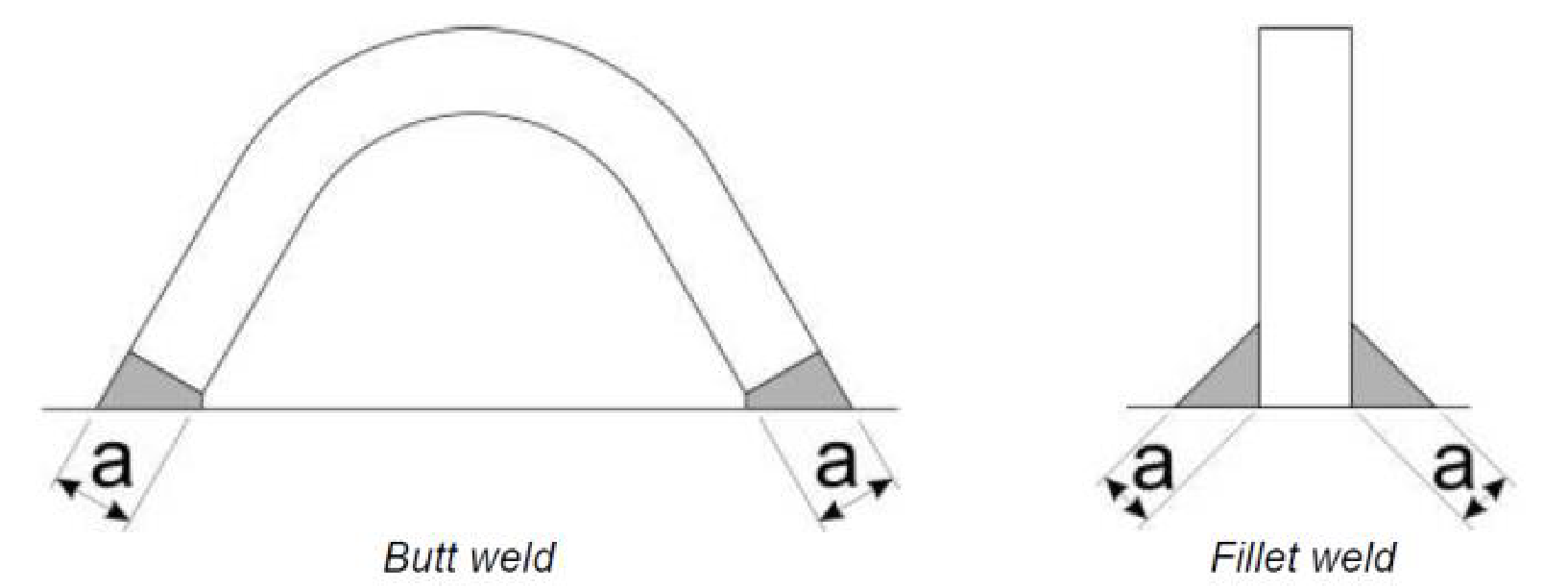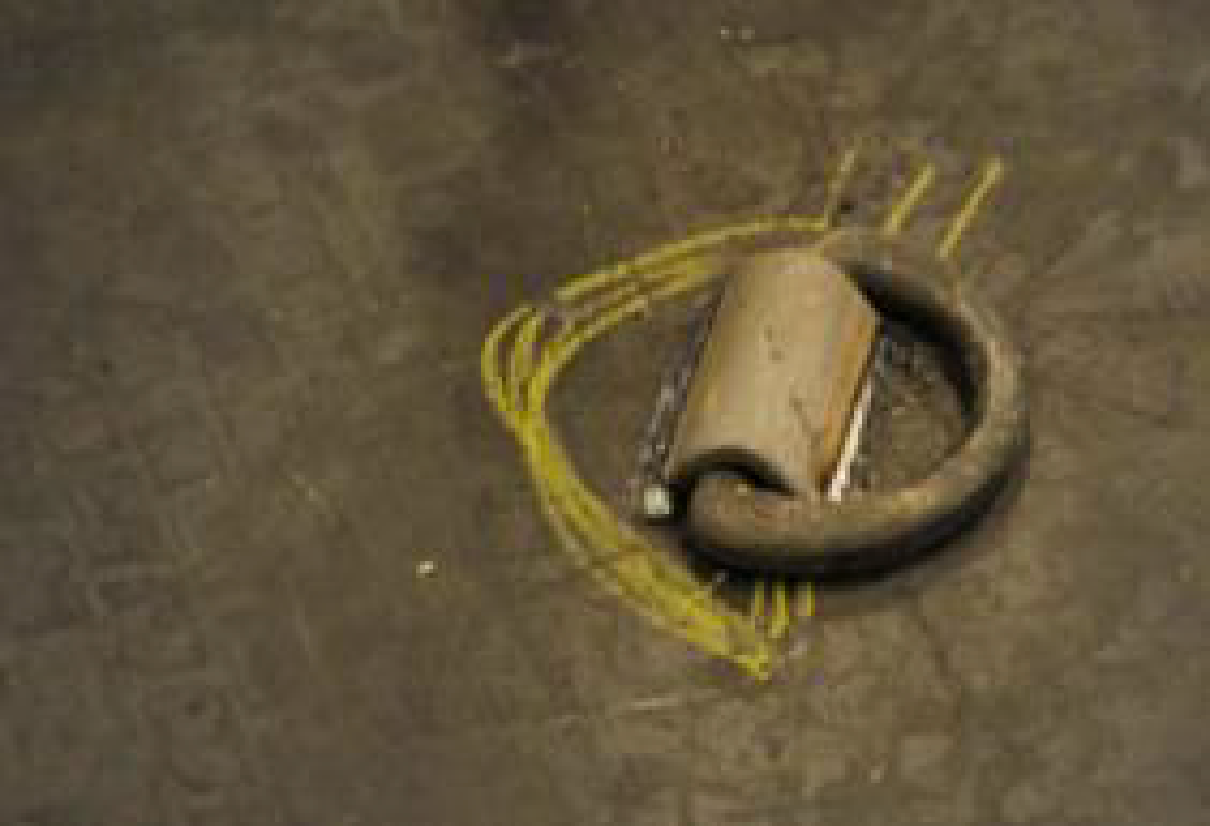Lashings should be fixed to securing points on the vessel's deck and other structure with adequate strength.
The strength of the fittings can be found in the vessel's cargo securing manual.
If existing securing points are of limited strength it might be required to weld temporary fittings to the vessel's deck for the intended voyage. It is important that such fittings are located at the vessel's basic structure and that welds are carried out by certified persons and with adequate weld dimensions. Any welding should be carried out in accordance with accepted hot-work procedures.
Before commencement of any welding, Master/CO should be consulted to verify welding can take place on the actual deck and that no bunker tanks are located below. If required the local port authority should also be informed.

The approximate Maximum Securing Load, MSL, in ton of a welded joint can be calculated by the following rule of thumb:
MSL = a x L x 0,006 (ton), where
a = Thickness of the weld in mm, see figure above
L = Total length of the welds in mm
NOTE! IN THE FIGURES ABOVE THERE ARE TWO WELDS ON EACH FITTING, ONE PER SIDE


In the photo above, proper positions for temporary lashing fittings on the vessel's deck are identified and marked. It is of great importance to get them above stiffeners on the underside of the deck plate.
The D-ring in the photo to the right has a weld with an a-measure of 12 mm and a weld length of 2 x 120 mm.
According to the rule of thumb the strength is about 17 ton. According to the datasheet for the D-ring the MSL is 16 ton according to DNV GL and 18 ton according to Lloyd's Register (LR).